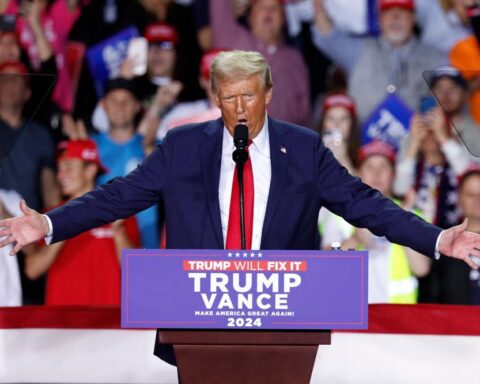The decision to decrease monthly premiums aims to alleviate potential financial burdens for seniors while countering political backlash as the presidential campaign heats up.
In a strategic move ahead of the upcoming presidential election, the Biden administration announced on September 27, 2024, that older Americans will experience lower average monthly premiums for their prescription drugs next year. This decrease, from $53.95 to $46.50, is attributed to the administration’s decision to invest billions in subsidies for insurers, thereby avoiding a significant spike in costs that could have politically harmed the campaign of Vice President Kamala Harris.
Federal regulators acted proactively to offset potential rate increases that could have burdened millions of Medicare beneficiaries. The average premium for Medicare drug plans is set to decrease by 14 percent, largely in response to pressures stemming from the $2,000 annual cap on out-of-pocket spending established under the Inflation Reduction Act. Without this intervention, many older Americans would likely have faced hundreds of dollars more in annual premiums.
As the Biden administration navigates the complexities of healthcare reform, Republican critics have slammed this subsidy strategy as a politically motivated ploy. Joe Grogan, a former White House official under President Donald Trump, characterized the subsidies as a temporary fix aimed at masking significant premium increases that were anticipated without intervention. He contended that the administration is simply buying time with taxpayer dollars.
In response to these criticisms, Medicare officials defended the subsidies, highlighting that similar programs have been implemented in the past to stabilize rates. The FTA indicated that the subsidies were designed to ease the financial strain on Medicare recipients, emphasizing that most private insurers accepted the offer to maintain stable premiums.
The announcement comes at a crucial time, as Medicare enrollment for the upcoming year begins on October 15, 2024. Nearly 50 million Americans are enrolled in Medicare drug plans, which will now offer a variety of options, including some with no premium costs at all. However, premiums will vary by plan, and some beneficiaries may need to switch plans to avoid increases.
Federal health officials reported that the subsidies would cost approximately $5 billion in 2025, representing about 3 percent of projected spending for Medicare’s Part D program. Notably, this funding is drawn from a Medicare trust fund that is financed through both general revenues and the premiums paid by beneficiaries.
While the administration has succeeded in reducing premiums, the cap on out-of-pocket spending represents a significant victory for President Biden, addressing extreme financial hardships faced by some beneficiaries. However, experts note that only a small percentage of the 67 million Americans on Medicare will benefit from this provision, and without the government’s intervention, many would have faced higher costs.
The political stakes surrounding Medicare drug pricing remain high as the election approaches. The Biden administration’s efforts to stabilize premiums serve not only to alleviate financial pressures on seniors but also to bolster a key talking point of its healthcare agenda. In contrast, Republican lawmakers have decried the program as a short-term solution to the challenges posed by the Inflation Reduction Act, asserting that more robust, long-term solutions are needed to protect seniors from rising costs.
Overall, as the Biden administration works to navigate the complexities of healthcare reform and drug pricing, the recent announcement reflects a broader strategy to balance political considerations with the needs of older Americans.















